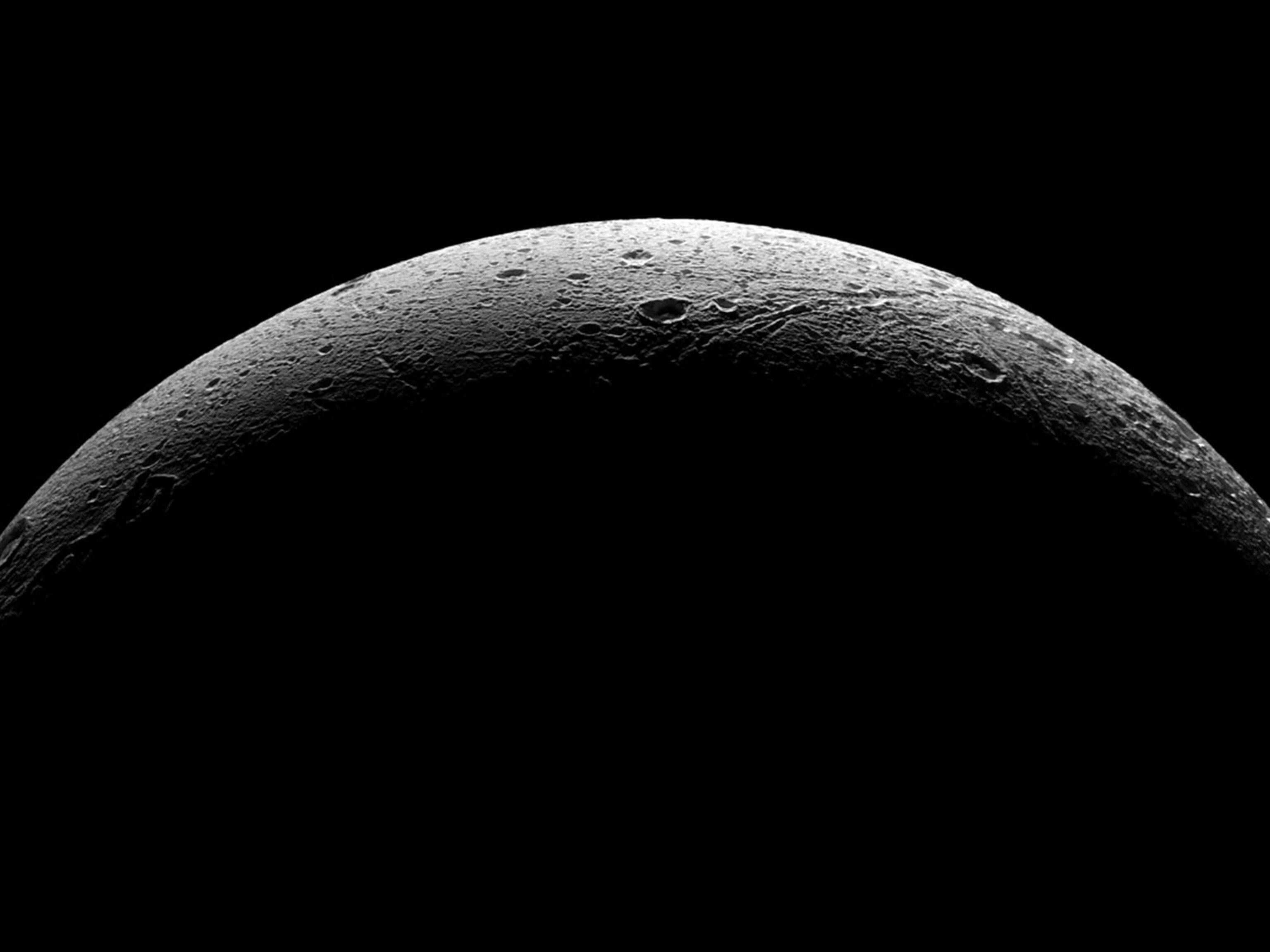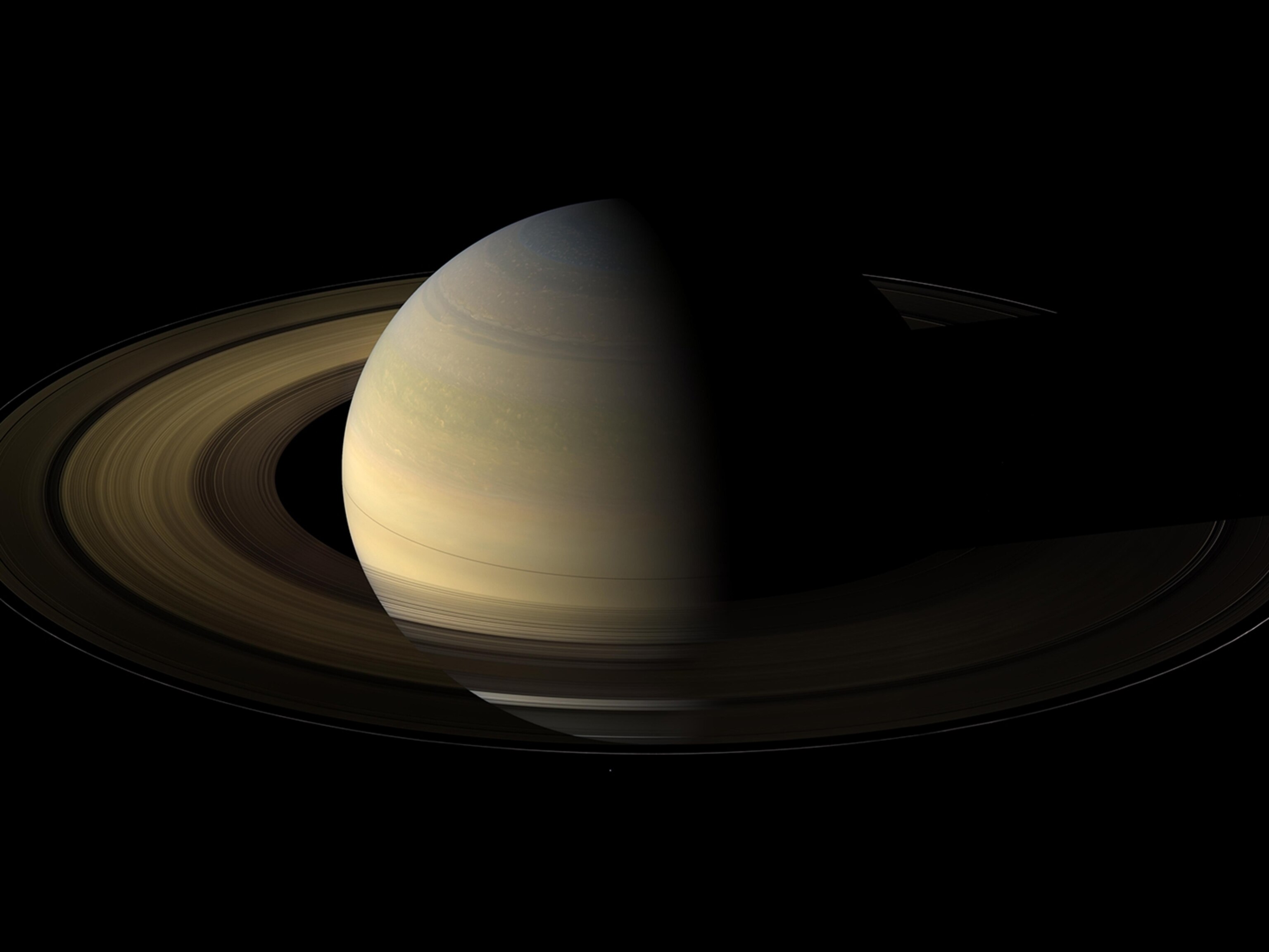
This Week’s Night Sky: See Saturn at Its Best
Look toward the southeastern sky for prime views of the true lord of the rings.
Mars Close Up. On May 30, Mars reached its closest proximity to Earth in over a decade, and it will remain an amazingly bright star-like object in the eastern evening sky for the next couple of weeks.
At times our two worlds can be on opposite sides of the sun and be separated by as much as 249 million miles (400 million kilometers). But from now until June 12, the red planet will be no farther than 48 million miles (77 million kilometers) away. Whether you have a telescope, binoculars, or even just use your naked eyes, now is the time to check out Mars for yourself.
Ringed Wonder. Skywatchers are in for an additional celestial treat, as the majestic planet Saturn appears at its biggest and brightest in our evening skies for the year.
The true lord of the rings reaches opposition on June 3, when it lies opposite to the sun in our sky. Not only does the gas giant stay visible all night, rising in the east at sunset and setting in the west at dawn, but it also lies closest to Earth at a mere 840 million miles (1.35 billion kilometers) away.
For planet watchers, this means that Saturn will shine at its brightest and appear its largest in backyard telescopes. It will remain well placed for viewing for all of June and well into July.

Hunting down Saturn is easy even with the naked eye—it looks like a striking golden-yellow star within the faint constellation Ophiuchus, rising from the eastern horizon as night falls. The planet will sit to the left of ruddy Mars and above the orange star Antares, forming a neat triangular pattern that will be hard to miss in the southeastern skies.
To get the most awe-inspiring views of Saturn, you will need a small telescope with high magnification. The iconic system of rings is perfectly positioned for our viewing pleasure, since it now appears tilted as much as 26 degrees toward Earth. And with backyard telescopes that are six inches or larger, viewers should be able to spot Saturn’s largest moons Titan and Enceladus as tiny dot-like objects on either side of the planet.
Green Giant. For an added observing challenge this week, check out the planet Uranus rising together with the crescent moon before dawn on June 1.
While the ice giant can technically be seen with the naked eye from dark locations, it's best to use binoculars to scan for its tiny green disk amongst the faint background stars of the constellation Pisces. This week the moon will act as a convenient guidepost only seven degrees away—a bit more than the width of your three middle fingers held at arm’s length.
Clear skies!

Andrew Fazekas, the Night Sky Guy, is the author of Star Trek: The Official Guide to Our Universe. Follow him on Twitter, Facebook, and his website.
Related Topics
You May Also Like
Go Further
Animals
- Orangutan seen using plants to heal wound for first timeOrangutan seen using plants to heal wound for first time
- What La Palma's 'lava tubes' tell us about life on other planetsWhat La Palma's 'lava tubes' tell us about life on other planets
- This fungus turns cicadas into zombies who procreate—then dieThis fungus turns cicadas into zombies who procreate—then die
- How can we protect grizzlies from their biggest threat—trains?How can we protect grizzlies from their biggest threat—trains?
Environment
- What La Palma's 'lava tubes' tell us about life on other planetsWhat La Palma's 'lava tubes' tell us about life on other planets
- How fungi form ‘fairy rings’ and inspire superstitionsHow fungi form ‘fairy rings’ and inspire superstitions
- Your favorite foods may not taste the same in the future. Here's why.Your favorite foods may not taste the same in the future. Here's why.
- Are the Great Lakes the key to solving America’s emissions conundrum?Are the Great Lakes the key to solving America’s emissions conundrum?
- The world’s historic sites face climate change. Can Petra lead the way?The world’s historic sites face climate change. Can Petra lead the way?
History & Culture
- Meet the ruthless king who unified the Kingdom of Hawai'iMeet the ruthless king who unified the Kingdom of Hawai'i
- Hawaii's Lei Day is about so much more than flowersHawaii's Lei Day is about so much more than flowers
- When treasure hunters find artifacts, who gets to keep them?When treasure hunters find artifacts, who gets to keep them?
Science
- Why ovaries are so crucial to women’s health and longevityWhy ovaries are so crucial to women’s health and longevity
- Orangutan seen using plants to heal wound for first timeOrangutan seen using plants to heal wound for first time
Travel
- A slow journey around the islands of southern VietnamA slow journey around the islands of southern Vietnam
- Is it possible to climb Mount Everest responsibly?Is it possible to climb Mount Everest responsibly?
- 5 of Uganda’s most magnificent national parks
- Paid Content
5 of Uganda’s most magnificent national parks




